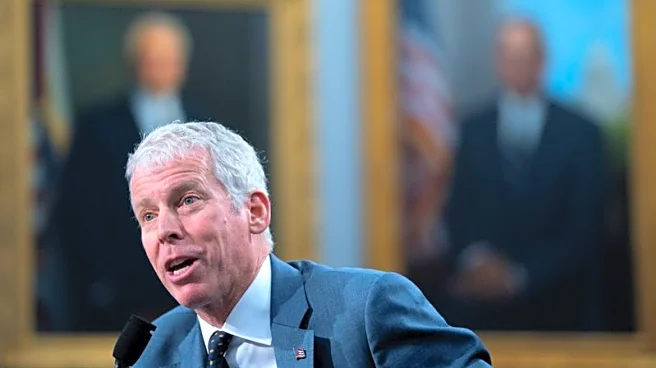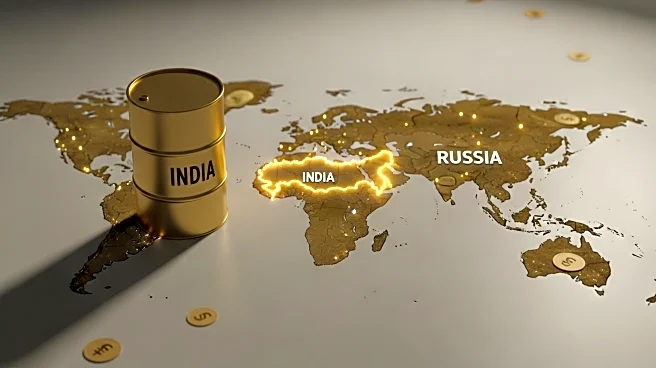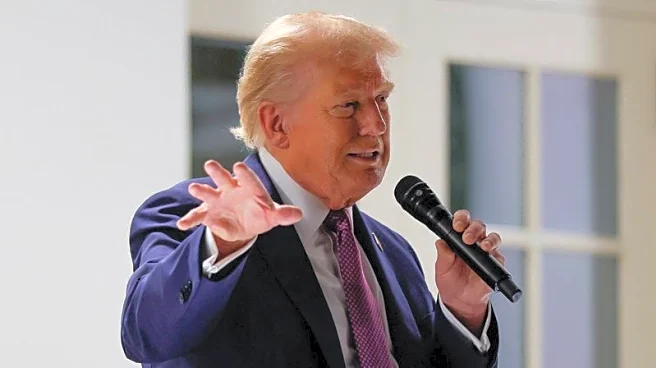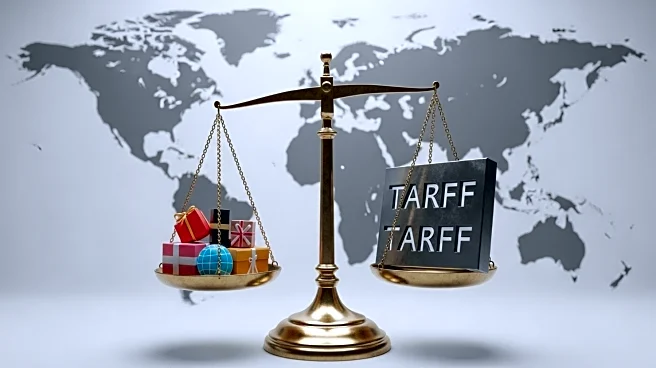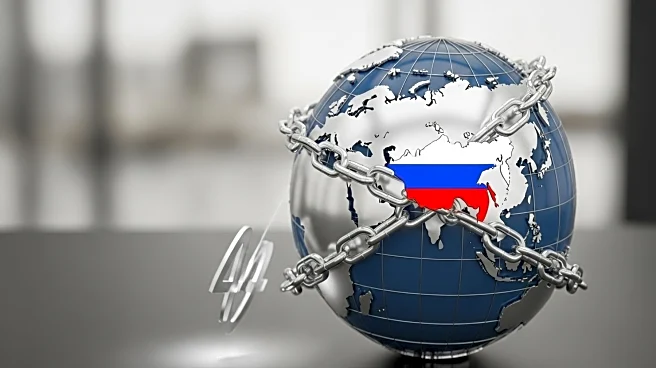What is the story about?
What's Happening?
BRICS countries, comprising Brazil, Russia, India, China, and South Africa, are meeting virtually to discuss strategies to counteract U.S. trade protectionism. This meeting highlights the shifting dynamics in global trade alliances as countries respond to Washington's tariff policies. Concurrently, South Korea is considering joining the CPTPP, a pan-Pacific free trade group, while European officials are engaging with India to strengthen economic ties. New data indicates a decline in Chinese exports to the U.S., although sales to other regions have increased, suggesting resilience in global trade despite U.S. tariffs.
Why It's Important?
The BRICS meeting underscores the growing concern among developing nations regarding U.S. trade policies, which could lead to realignments in global trade partnerships. As countries seek alternatives to U.S. markets, this could impact American businesses reliant on international trade. The potential shift in trade alliances may also influence global economic stability and the balance of power in international trade negotiations. The resilience of non-U.S. trade relationships suggests that countries are adapting to protectionist measures, potentially diminishing U.S. influence in global trade.
What's Next?
The outcomes of the BRICS meeting may lead to coordinated efforts to establish new trade agreements or strengthen existing ones among member countries. The U.S. may face increased diplomatic pressure to reconsider its protectionist policies. Additionally, other nations may accelerate their pursuit of alternative trade partnerships, potentially reshaping the global trade landscape. Observers will watch for any formal agreements or declarations resulting from the BRICS discussions, which could signal a shift in international trade strategies.
AI Generated Content
Do you find this article useful?


